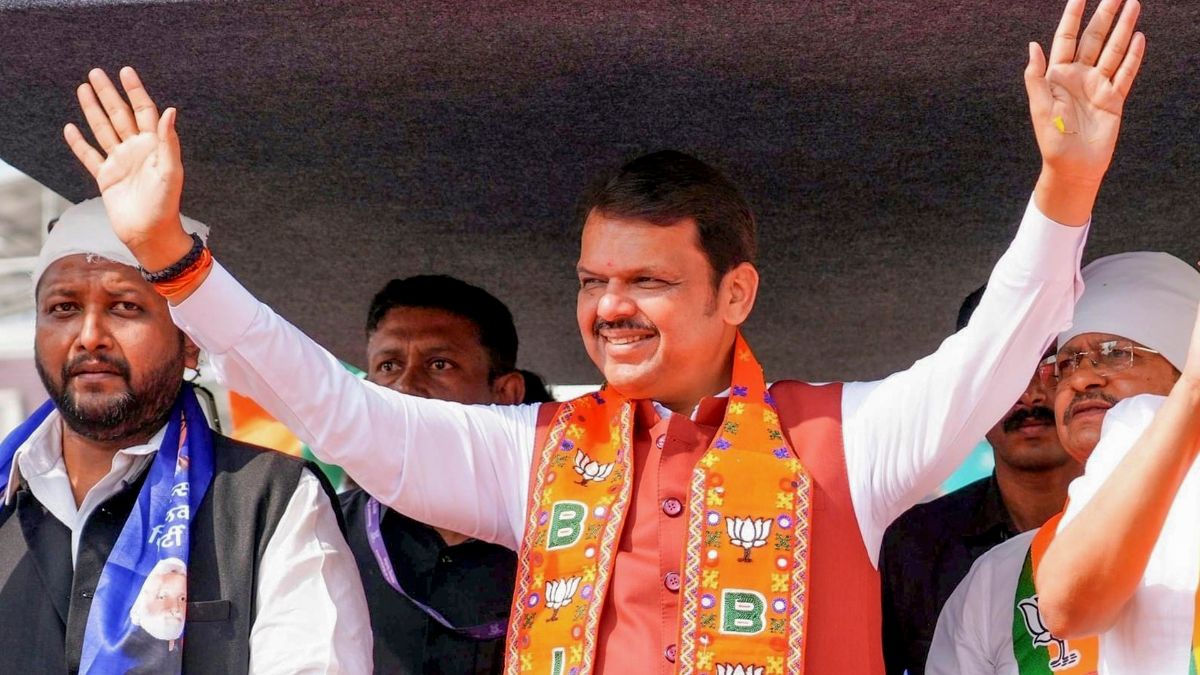After 11 days of tiresome deliberation, Devendra Fadnavis has finally taken oath as the next chief minister of Maharashtra on Thursday. The Mahayuti reached a breakthrough in picking the chief minister’s face on Wednesday, just a day before the swearing-in ceremony. Weeks of drama culminated in Fadnavis securing the top post with Eknath Shinde and Ajit Pawar as his deputies.
In his third term as chief minister, Fadnavis has to fill Shinde’s shoes as the popular leader among the people of Maharashtra. The Bharatiya Janata Party, which holds the lion’s share of seats in the Mahayuti alliance, has put a lot of faith in Fadnavis to lead the state, especially after the party’s poor show during the Lok Sabha elections. The incoming chief minister, however, has proven his worth after his first term but this time it’s going to be different and Fadnavis himself realises it.
Speaking after being unanimously elected as the chief minister, Fadnavis said, “Our responsibility has increased. We need to work harder. The struggle ahead is about meeting the expectations people have from us. We must work in tandem with our allies to achieve this.”
The Mahayuti won a resounding victory in the Maharashtra Assembly elections but with this success has come a flurry of responsibilities and expectations from the BJP, Shiv Sena and NCP coalition. Here are five of them:
Shinde may have accepted the post of deputy chief minister but he did so reluctantly. He essentially switched posts with Fadnavis, an inevitable outcome after the BJP won 132 out of 288 Assembly seats. When Shinde left Uddhav’s Sena in 2022 to join the BJP, the latter had no choice but to keep him in the CM’s chair. Although it seems he would not brew trouble for the alliance in the initial few months, Shinde still holds ground in the bloc as Shiv Sena is the second-largest party in the Assembly
Thursday’s swearing-in ceremony will only see Fadnavis, Shinde and Pawar taking oath as the chief minister and deputy chief ministers respectively. The Cabinet expansion would take place later as it requires more deliberation. While Mahayuti has passed the first hurdle in government formation, there’s another problem that might delay the process but the clock is ticking as the winter assembly session nears. The alliance is yet to be on the same page about portfolio allocation with Shinde and Pawar demanding plum ministries. Shinde is eyeing to retain the Urban Development and Maharashtra State Road Development Corporation (MSRDC) ministries and is pushing for other portfolios including revenue, agriculture, health, rural development, industry, and social justice. Meanwhile, Pawar seems to be content with his deputy chief minister post but wants the finance ministry for himself
After winning the state elections, Fadnavis’ government has to schedule the already-delayed Brihanmumbai Municipal Corporation (BMC) polls as civic affairs in Mumbai come to a head. The term of the previous administration, which has Shiv Sena at the helm, ended in 2022. The elections were deferred after the Shinde faction of Shiv Sena and BJP came to power and decided to revise BMC’s delimitation. Since then, the civic body has been fraught with corruption allegations, near-breakdown of essential services, etc. Last week, Sena MPs discussed the BMC polls with Amit Shah in a meeting
It comes as no surprise that the Ladki Bahin scheme was a major driving force in Mahayuti’s win, but it came at a price. Fadnavis is now staring at a debt burden of over Rs 90,000 crore. Interest payments on the debt alone are 40 per cent of Maharashtra’s revenue. The new chief minister does not only need to manage the crisis but also fulfil Mahayuti’s promise to increase the financial aid under the scheme from Rs 1,800 to Rs 2,100 per month
Maharashtra is the third-largest state in India and Fadnavis has the mammoth job of putting it back on the growth track. The Mahayuti alliance under Fadnavis has to address other issues like regional disparities, the most crucial of them being the case of the Maratha reservation. He also has to address the unemployment problem in both urban and rural areas
)